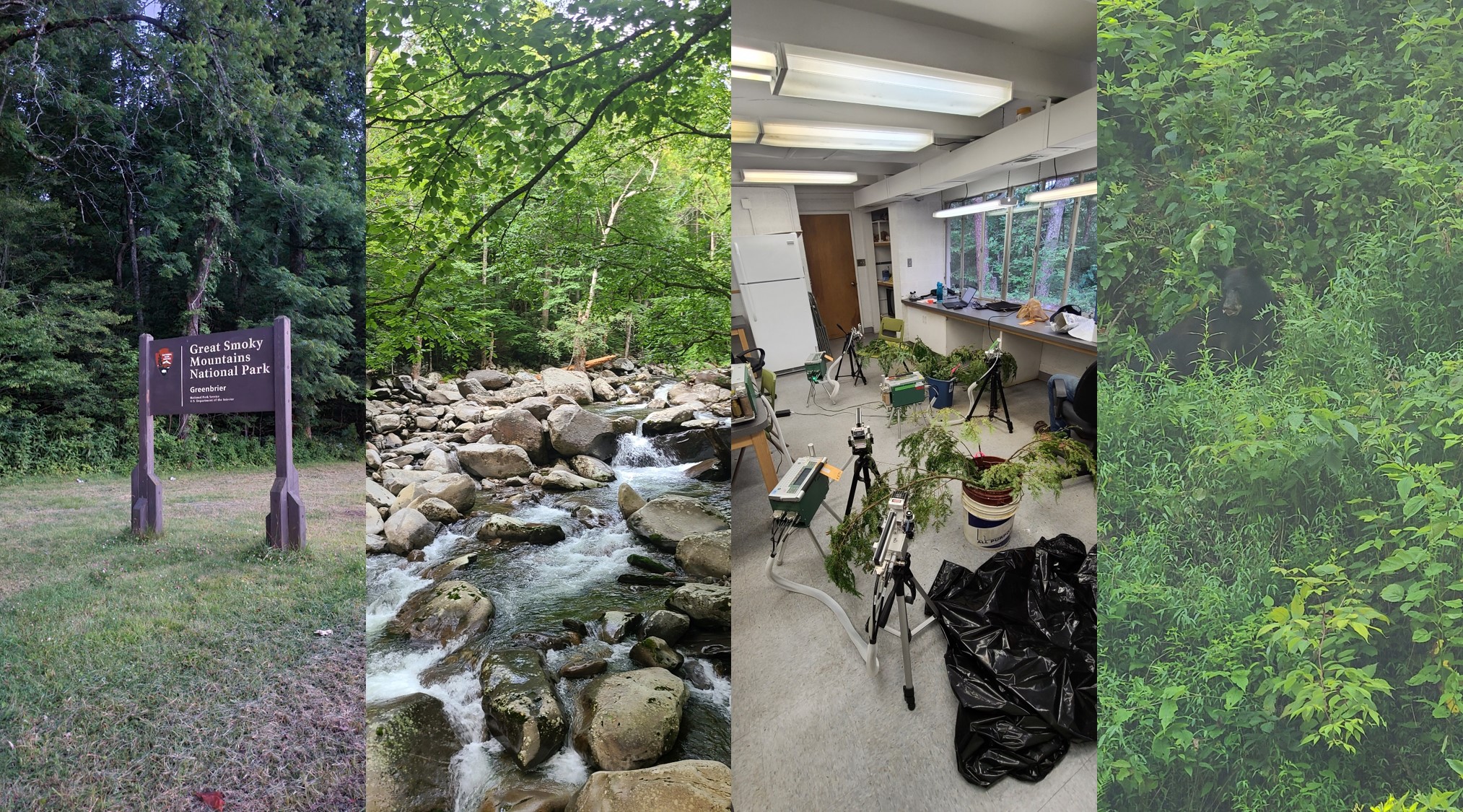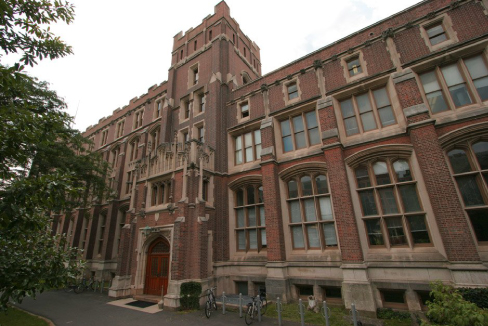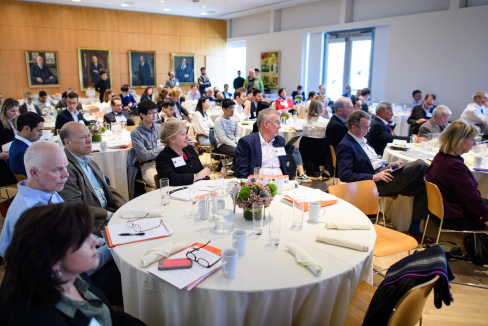Principal Investigator
At a Glance
In 2023, the Pacala lab focused on the interaction between climate change, the carbon cycle and biodiversity. Decades of experimental and observational work has demonstrated strong relationships between terrestrial plant biodiversity and ecosystem-level carbon uptake, carbon storage and water cycling. Research has found that biodiversity impacts the pace and nature of climate change, and that climate change is a major threat to biodiversity. The two-way interaction between biodiversity and climate change implies feedback that could regulate or worsen climate change. The Pacala lab is working on the first models of this feedback. The intention is to include them in Earth System models that predict climate change. The goal is to develop a theory and models that simultaneously address the climate and biodiversity problems. In 2023 and over the last several years, the lab published models that show how species diversity is maintained in physiological and structural attributes of plants with important effects on the carbon and hydrologic cycles and climate. The researchers showed last year that all these models have the same unexpected underlying mechanism that maintains diversity, which will greatly facilitate the development of operational climate-biodiversity models. The lab also completed work on two worrisome carbon cycle feedback loops involving the proliferation of woody vines in tropical forests and bamboo takeover of forests in Asia. This research is important for companies and policy makers, as the overgrowth of these species could lead to rainforest collapse, which would greatly decrease humanity’s remaining carbon budget.

Research Highlight
Biodiversity has a large impact on climate, two bodies of scientific work imply. First, experiments and measurements show that carbon uptake and carbon storage substantially increase with diversity (Figure 13.1, Tilman et al., 2014). Second, the diversity of plant species in a basin strongly affects watershed-scale evapotranspiration in natural ecosystems (Figure 13.2, Anderegg et al., 2018).

Ecosystem sensitivity to drought as a function of community variation in hydraulic safety margin (Anderegg et al., 2018).
These effects are very large – note the changes of 100% in Figure 13.1. Nonetheless, Earth System models do not yet include them, in part because the mechanisms that maintain the diversity are not understood. The Pacala lab has focused for the last several years on building an Earth System model in which species diversity in traits that affect climate is maintained for the right reasons. These efforts use simplifications of the land component of the NOAA GFDL Earth System model (LM4), which the Pacala lab produced with Elena Shevliakova and Sergey Malyshev of GFDL (Shevliakova et al., 2024; Figure 13.3). Published examples include Detto et al. (2021) in Ecological Monographs, and Levine et al. (2022) in Ecology Letters, with another four in various stages of review.

Schematic of land surface processes (e.g. dynamic vegetation competition, land use) and land-atmosphere interactions including radiative, hydrological, CO2 , dust and other aerosol fluxes in GFDL’s LM4.1 land model (Shevliakova et al., 2024).
These papers show that the processes already present in LM4 will maintain very high levels of species diversity in traits that affect climate, which was a surprise the researchers did not understand. In the past year, the work showed that all these models have the same unexpected underlying mechanism that maintains diversity. This will greatly facilitate the development of operational climate-biodiversity models. The mechanism that maintains diversity, though widely criticized as unrealistic, has been in the ecological literature for more than 50 years (Levins and Culver, 1971) and is known as the “competition-colonization model.” Its emergence was unexpected because the mechanism in the competitioncolonization model was not built into the researchers’ models, but rather emerged by a nonobvious path directly from the physiological realism. The work is relevant to bp, because it will lead directly to better understanding of the resilience and longevity of the terrestrial carbon sink, which is a primary determinant of humanity’s remaining emissions budget.
Additionally, two other large projects were led by Pacala in the past year. Neither was funded by the CMI, but both are relevant. First, Pacala chaired a committee of the National Academies of Science Engineering and Medicine, which released in October 2023 a more than 600-page policy manual for implementation of the Inflation Reduction Act and the Infrastructure Investment and Jobs Act. Since its release, Pacala has given between 50 and 100 briefings on this work, mostly to federal agencies. Second, Pacala chaired, with economist and Stanford Business School Dean Jon Levin, a study and report on how to safeguard the U.S. population and economy against climate-change-enhanced extreme weather. This is intended for the President and was released in April 2023. One of the primary recommendations in this report is for a new effort to produce much better and more geographically granular estimates of the probabilities of extreme weather over the next 25 years. This is now underway using Infrastructure Investment and Jobs Act (IIJA) funding.
References
Anderegg, W.R.L. et al., 2018. Hydraulic diversity of forests regulates ecosystem resilience during drought. Nature 561:538–541. (https://doi.org/10.1038/s41586-018-0539-7).
Detto, M., J. Levine, and S.W. Pacala, 2021. Maintenance of high diversity in mechanistic forest dynamics models of competition for light. Ecological Monographs 92(2):e1500. (https://doi.org/10.1002/ecm.1500).
Levine, J. I., J.M. Levine, T. Gibbs, and S.W. Pacala, 2022. Competition for water and species coexistence in phenologically structured annual plant communities. Ecology Letters 25(5):1110-1125. (https://doi.org/10.1111/ele.13990).
Levins, R. and D. Culver, 1971. Regional coexistence of species and competition between rare species. PNAS 68(6):1246-1248. (https://doi.org/10.1073/pnas.68.6.1246).
National Academies of Sciences, Engineering, and Medicine. S.W. Pacala, chair, 2023. Accelerating Decarbonization in the United States: Technology, Policy, and Societal Dimensions. Washington, DC: The National Academies Press. (https://doi.org/10.17226/25931).
Naeem et al., 1995. Empirical evidence that declining species diversity may alter the performance of terrestrial ecosystems. Philosophical Transactions of The Royal Society B 347(1321):249-262. (https://doi.org/10.1098/rstb.1995.0025).
President’s Council of Advisors on Science and Technology Working Group on Extreme Weather Risk in a Changing Climate. S.W. Pacala, co-lead, 2023. Report to the President: Extreme weather risk in a changing climate: Enhancing prediction and protecting communities. https://www. whitehouse.gov/wp-content/uploads/2023/04/PCAST_ Extreme-Weather-Report_April2023.pdf.
Shevliakova, E., S. et al., 2024. The land component LM4.1 of the GFDL Earth System Model ESM4.1: Model description and characteristics of land surface climate and carbon cycling in the historical simulation. Journal of Advances in Modeling Earth Systems. In press.
Tilman, D., F. Isbell, and J.M. Cowles, 2014. Biodiversity and ecosystem functioning. Annual Review of Ecology, Evolution, and Systematics 45:471–93). (https://doi.org/10.1146/annurev-ecolsys-120213-091917).




